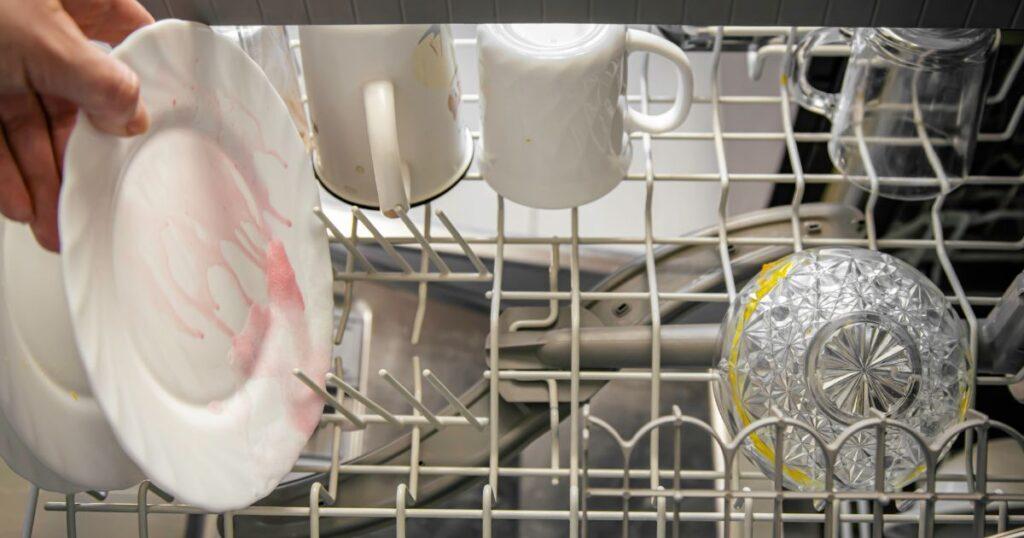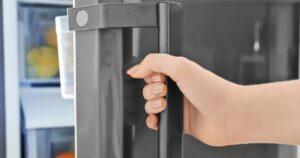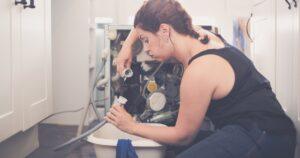Has your dishwasher started to leave food residue and spots on your dishes? You are not alone – it is a very common issue that many homeowners experience where the dishwasher stops cleaning dishes properly or is not cleaning the dishes as well as it used to. This is frustrating when you expect your dishwasher to get the dishes sparkling clean so you can put them away after each load.
Common Reasons for a Dishwasher Not Cleaning Properly
Some of the primary reasons why a dishwasher may not be cleaning dishes include dirty dishwasher interior trapping soils, a clogged spray arm or filter blocking the water jets, improper loading positioning dishes incorrectly, using incorrect detergent or cycle for the load, and low water temperature preventing effective cleaning.
Dirty Dishwasher Interior:
One of the main reasons why a dishwasher may not be getting dishes clean is due to a dirty dishwasher interior. Over time, food debris, soap scum and hard water stains can build up inside the dishwasher and attract more soil.
This trapped dirt acts like a filter blocking the spray arm jets which limits water pressure and the ability to properly blast soils off dishes. It is important to perform regular cleanings, especially of the door gasket and filter areas, to remove buildup and prevent this.
Clogged Spray Arm or Filter:
Another common problem is a clogged spray arm or filter. Food particles can clog the openings of the spray arm, blocking the efficient spray pattern needed to hit all surfaces of dishes uniformly. This stops dishes from getting fully wetted during the wash cycle. Filters also need regular cleaning to remove particles and ensure waste water drains properly.
Improper Loading:
How dishes are loaded in the dishwasher can also negatively impact cleaning. For example, not spacing items properly may allow soils to hide behind or not be reached by spray jets. Loading dishes close together prevents efficient water/detergent contact. It is important to follow recommended loading patterns for the best results.
Incorrect Detergent
Using the wrong type of detergent can also negatively influence how well a dishwasher cleans dishes. Much like a dirty dishwasher interior trapping soils, or a clogged spray arm limiting water pressure, the improper detergent may not fully remove stubborn food and drink residues. Dishwasher detergents are formulated to work with specific wash cycle temperatures and pressures. If an incompatible product is loaded, it can fail to activate and produce the necessary cleaning power.
Low Water Temperature
Just as important as using the right detergent suited to a dishwasher’s specifications is having water that is sufficiently hot. Most dishwashers need incoming water around 140°F in order to activate cleaning chemicals and properly sanitize. However, if the water heater is set too low or the supply lines aren’t properly insulated, the water entering the dishwasher may be significantly cooler.
Troubleshooting and Dishwasher Repair Guide
Ensuring your dishwasher runs at its best requires some regular care and checks. By addressing a few common trouble areas, you can help your appliance thoroughly clean dishes cycle after cycle.

Cleaning the Dishwasher Interior:
Over time, food debris, soap scum, and minerals from hard water can collect inside your dishwasher. This trapped dirt attracts more soil each wash. To prevent this buildup:
- Run the dishwasher on its highest heat cycle monthly with an empty interior and a citric acid or white vinegar cleaner placed inside. This helps dissolve deposits.
- Wipe down the door gasket and seal it with an all-purpose cleaner to remove soil. Replace the gasket if cracked or worn.
- Remove the lower spray arm and check for clogs in the spray tip openings. Clean with an old toothbrush if needed.
- Inspect and clean the dishwasher filter weekly by removing it and rinsing away food particles under running water.
- Wipe down the interior walls and floor with cleaner as needed, especially the corners that typically collect soil.
Unclogging the Spray Arm:
The spray arm is a major area for clogs which can weaken wash performance. Check it regularly:
- Remove the lower spray arm by twisting it counterclockwise. Lift it out.
- Inspect each spray tip opening under bright light. Use a thin object like a paperclip to dislodge any debris stuck inside tips.
- For tougher blockages, submerge the arm in a bowl of white vinegar. The acid cuts through mineral deposits and food. Soak overnight if needed.
- Rinse the arm thoroughly under running water when clear. Spin the arm to remove excess moisture.
- Carefully replace the spray arm by fitting it back into position and twisting it clockwise to secure it.
Optimizing Dishwasher Loading:
How dishes are arranged inside the machine greatly impacts whether they get fully clean. To optimize loading:
- Leave space between items so detergent and water can work around each piece.
- Place the most heavily soiled items such as pans towards the bottom rack.
- Arrange top rack items with space beneath for water jets to clean undersides.
- Load bowls, pots and pans either face down or with openings facing down for self-draining.
- Fill racks from the furthest back point outwards to avoid blocking water/jet paths.
- Adjust the sliding middle or front racks as needed for extra tall items.
Selecting the Right Detergent and Cycle:
For soil removal, it’s important to pair the proper detergent with your dishwasher’s recommended cycle settings.
- Only use dishwasher detergent formulated for automatic dishwashers. Other cleaners may lack the necessary ingredients.
- Adjust detergent amount based on load size and soil levels. Too little leaves residue while too much is wasteful.
- Select a cycle suited for the day’s dishes. A quick cycle may not fully clean heavily soiled items.
- Consider jet-dry additions for hard water areas to improve drying results.
- Replace the detergent if it appears clumped or if dishes lack a clean shine after washing.
Checking Water Temperature:
Adequate water heat plays a key role in cleaning performance. Check the temperature regularly:
- Test water entering your dishwasher’s inlet valve with a food thermometer – it should be around 140°F.
- If cooler, adjust your water heater to a higher setting, or insulate supply lines with foam tubing for added insulation.
- Run the hot water tap closest to the dishwasher until hot to clear cooler water from pipes before starting a load.
- Consider calling a plumber if temperatures remain low despite adjustments, as there may be an issue with the appliance’s heating element.
Prevent Your Dishwasher From Stopped Cleaning
This paragraph will cover key things homeowners can do on a regular basis to avoid their dishwasher suddenly ceasing its cleaning functions. Some points I will touch on include:
- Not overloading racks and allowing proper airflow
- Selecting appropriate cycles for different dishes
- Using recommended detergents for the water hardness level
Ensure Your Dishwasher Continues Cleaning With Ash Appliance Repair
As the area’s leading appliance technicians, Ash Appliance Repair can diagnose and fix any dishwasher problem accurately and promptly. They utilize state-of-the-art equipment and training to resolve issues in a timely manner. What’s more, their fair pricing and honest diagnoses mean you avoid overpaying for unnecessary repairs.






